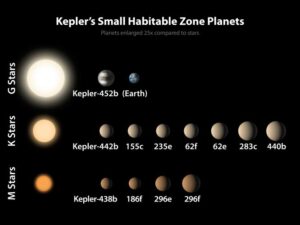Many worlds beyond the Stars: Astronomers discover two stars larger than Sun

Astronomers have discovered two stars larger than the Sun PHL @ UPR Arecibo, ESA-Hubble, NASA
It seems absurd when we are trying moonsighting through climbing a high rise building. We have no knowledge, rather idea how must the astronomy science has developed. What is good piece of a copulate from Urdu poetry: “Sitaroon se aagy Jahan Aur bhe hen” (there are many Many worlds beyond the Stars)
Astronomers have seen two gas giant exoplanets orbiting the star, shining like the sun. Exoplanets are planets that orbit a star outside the solar system.
The difference between a star and a planet is that the star itself shines, while the planet receives light from another star.
The Hunters Transiting Exoplanet Survey Satellite Project has discovered planets around a distant star called HD 152843, located 352 light-years from the Earth. The Hunters Transiting Exoplanet Survey Satellite Project is subsidiary of NASA.
According to NASA, the star’s mass is as large as the sun, but it is 1.5 times larger and slightly brighter.
The first planet is called HD 152843b, which is 3.4 times larger than the Earth, even larger than the size of Neptune. As it orbits its star and completes its journey in about 12 days.
The second planet, named HD 152843c, is 5.8 times larger than Earth and 27.5 times denser than Earth, assuming it is similar to Saturn, or a planet between the size of Neptune and Saturn. Its orbit is in between 19 and 35 days.

Nora Eisner, an astronomical author and doctoral student at the University of Oxford in the UK, studied simultaneously how planets form and evolve over the time. It’s really interesting.
The scientists from the Planet Hunters TES project discovered three separate transit events, in which a small dip is recorded on a star’s face when a planet crosses the star’s face and blocks its light.
Observations of HD 152843 show that exoplanets are very hot and gaseous to help life. However, according to NASA, the study of two new expoplanets helps scientists understand the group of possible planets in our galaxy.
Scientists believe that there are ten planets in the universe where aliens or space creatures may live.
This article has been written through research and reading of latest development in Astronomy Science.





